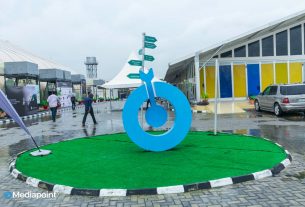When Carlo Polidori is driving and starts rubbing the back of his neck, he knows it’s probably time to take a break. The act is a sign that he’s getting tired behind the wheel.
Polidori, who is president of the Italian Association of Road Safety Professionals, drove for decades without being aware of his habit. He spotted it in 2022 when joining an EU project to come up with an advanced electronic device that can check people’s driving performance.
Drowsy signs
‘Before, I had no idea that this was an indicator I’m getting fatigued,’ said Polidori, whose association – also known as AIPSS – promotes best practices in the field of road safety.
AIPSS is part of a research project that received EU funding to develop a better way for detecting the onset of mental and physical fatigue in drivers. Called FITDRIVE, the project runs for three and a half years until the end of February 2025.
The FITDRIVE team, led by the ITCL Technology Centre in Spain, is building technology integrated into the car’s software that will send customised alerts to drivers when they should pay more attention to the road or even take a break.
‘We observe the physiological status of a driver,’ said Polidori. ‘We look at when a driver is fit to drive and take action when they’re not.’
While existing technology in the field can send alerts when people stray from a lane or drive erratically, it is mostly onboard software that isn’t customised for each driver.
Road tests
Driver fatigue is a contributing factor in 15% to 20% of serious road crashes, the European Road Safety Observatory said in a 2021 report.
“
This system customises itself for each driver.
Around 20 400 people were killed in road accidents in the EU in 2023, according to the European Commission. While the figure represented a 1% decline compared with 2022, the Commission said too few EU countries were on track to meet a target of halving road deaths by 2030.
FITDRIVE is among a number of EU projects finding ways to bring down the number of road fatalities in Europe. Researchers believe that, with the right technology, people can be prodded into driving more safely.
The research challenge starts with the basics: knowing when exactly a driver is becoming tired. The FITDRIVE team is collecting this data through tests on groups of volunteers.
So far, the volunteers have driven a car simulator and ridden around on closed-off tracks in Italy and Spain under various weather conditions. Those tests took place in 2023.
Before the project wraps up, the plan is to conduct real-world tests in Ireland, Italy and Spain.
The information collected during the first two sets of tests came from cameras watching the drivers’ faces and headsets to monitor brain waves.
The data will feed into an algorithm that, combined with an electronic bracelet, can detect when a driver is getting tired. The bracelet will monitor things like heart rate, arm-movement patterns and perspiration to note when a driver is becoming weary.
The algorithm will keep learning and adapting itself to each individual driver.
The system fine-tunes itself by continuously collecting data to build up a picture of each driver and assess risks during a particular driving session. In this way, it can detect individual cues of tiredness – such as when Polidori touches the back of his neck.
‘That’s the big difference from existing systems to spot fatigue,’ he said. ‘This system customises itself for each driver. It can advise them of issues before they themselves realise it.’
System upgrade
The current technologies that can recognise when a person is driving erratically or swerving from a lane are based on tests carried out on large numbers of volunteers and feature a one-size-fits-all algorithm for drivers.
Because everyone has a different driving style, these methods aren’t always accurate enough.
The project has 10 partners from seven countries including France, Germany, Spain and Sweden. Among the participants is Advanticsys, a Spanish company that specialises in sensors and software, and the European Driving Schools Association.
The FITDRIVE technology might even be useful in self-driving cars, which for the foreseeable future will require passengers to supervise operations and be ready to take control if necessary.
For that to happen, a person in the vehicle needs to be alert at key moments rather than sleeping or reading. A system like FITDRIVE’s could be used in self-driving cars to monitor people inside and make sure they are alert enough to intervene.
Safer hauling
Helping to ensure that drivers of heavy-duty vehicles stay alert behind the wheel was the focus of another EU-funded project.
Called i-DREAMS, it wrapped up in April 2023 after four years and came up with a way to notify lorry drivers when they started driving in unsafe ways. Heavy-duty vehicles accounted for 14% of all road fatalities in the EU in 2020.
“
We need to nudge the driver to drive more safely.
The project brought together 13 partners from eight countries including Austria, Belgium, Greece, the Netherlands and Slovenia. It carried out tests on 600 drivers at sites in five nations.
Using data from the vehicles, the driver and the surrounding environment, the project team created a statistical measure of when a driver was in control and, if not, sent the person an audio alert via a smartphone app.
When a person drove too closely to the vehicle in front, particularly when the road was wet, a signal would be sent.
The app can also coach drivers to do better. During the project, points were awarded to test drivers based on how well they drove.
‘The audio signals improved driving quality of test drivers,’ said Tom Brijs, who led i-DREAMS and is a professor in the department of traffic engineering at Hasselt University in Belgium. ‘Driving quality improved even further for those drivers who were coached in the app.’
Insurance guarantee
The app is already being used by some businesses.
For example, an insurance company uses the app to monitor its insured lorry drivers – particularly at hauliers with poor reputations, according to Brijs.
Some companies, especially those with higher-than-average accident rates, have less access to affordable insurance.
The i-DREAMS app enables such hauliers to get insurance as long as all their drivers use the app.
Car manufacturers might also use this technology in future to check whether drivers using cruise control are really paying attention, particularly in dangerous conditions.
‘We need to nudge the driver to drive more safely, particularly now that cars are becoming partly autonomous,’ Brijs said.
Research in this article was funded by the EU’s Horizon Programme. The views of the interviewees don’t necessarily reflect those of the European Commission. If you liked this article, please consider sharing it on social media.



